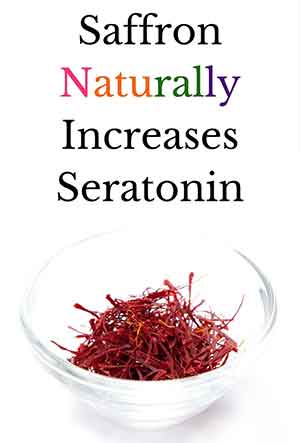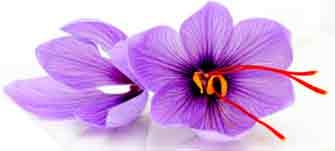Saffron crocus bulbs are planted and then in the spring time they sprout 6 to 9 green shoots that grow through spring and summer. In the autumn there is a 10-15 day time periodwithin which all the crocus flowers pop out, this is a most beautiful sight to see. The crocuses are all hand picked before the sun is up at dawn. The picked saffron flowers are then taken to have the valuable stigmas removed, dried to 8% moisture maximum then packed.
Growing your own couldn't be Easier
Despite saffron’s exotic reputation, it is child’s play to grow. This species is neither finicky nor temperamental, it is disease and insect resistant, and it requires little attention year after year. Its requirements are simple: Plant the bulbs (technically they’re corms) in the summer, harvest the stigmas in the fall, and if you get around to it, divide the plants every four years or so.
Growing saffron does require patience, even if it doesn’t require skill. A standard “starter kit” of 50 saffron bulbs will cost around $40 or $50, and will produce less than a tablespoon of seasoning the first harvest. Each year, though, you get more blossoms and more spice from these bulbs, increasing from one or two blooms per bulb the first year, to eight blooms or more by the third year.
Plant the corms 6 in. apart and 3 in. deep in rich, well-drained soil. Using your 50 bulbs, this will create a saffron bed about 2 ft. by 5 ft. As a bonus, you may plant this bed with summer annuals, while the saffron is lying in wait beneath the mulch for its autumn growing season. My great grandmother, Barbara Stoner, always grew portulaca in her saffron bed, and that combination is excellent for any century. When cold weather begins to nip at the portulaca, you pull it out, and there is the saffron, pushing up for its turn in the October sunshine.
Fresh saffron threads can be used immediately for cooking, or they can be dried and stored. Here in Lancaster County, a folk art form has evolved for the sole purpose of storing saffron. We have created our own saffron boxes—miniature containers, shaped like egg cups, for storing this valuable spice. When these prized antiques show up at auction, they sell for more than their weight in gold.
.
 Drying the saffron threads is a simple process of placing the strands on a paper towel for several days in a warm, dry place. You should then transfer the dried saffron to an airtight container and keep it in on a cool shelf, ready for your next yellow chicken dish.
Drying the saffron threads is a simple process of placing the strands on a paper towel for several days in a warm, dry place. You should then transfer the dried saffron to an airtight container and keep it in on a cool shelf, ready for your next yellow chicken dish.
Lancaster County cuisine is a humble cuisine. For centuries, our Amish and Mennonite kitchen gardens have produced farmers’ food—basic, unassuming meals that are meant to “stick to your ribs” and nourish your soul. My Mennonite grandmothers were not trend-setting gourmets. They knew nothing of nouvelle brunches, or spa cuisine, or macrobiotic dinners. Our food, here, is not about tarragon sauce and angel-hair pasta. We think in terms of quantity, not subtlety, at our farm tables.
For many visiting food lovers, it comes as a great surprise, then, to discover that our rural Pennsylvania Dutch cooks are connoisseurs of the world’s most expensive and exotic spice—saffron. Elsewhere, this garden spice is often shrouded in an aura of exotic mystery, but Lancaster County gardeners have been growing it alongside the cabbages for centuries.
Saffron usually means classical European cuisine, not American farm food. It is meant for risotto in Milan, and bouillabaisse in Marseilles, and paella in Madrid. But thankfully, it is also meant for chicken pot pie in Lancaster County.
Here, saffron is not the extravagant luxury it is thought to be elsewhere. Roman emperors bathed in saffron-scented waters and carpeted their theaters with the purple blossoms. Mennonites never did all that. Saffron, for us, means food—chicken dishes. This crocus provides the deep yellow color and pungent flavor that is critical for the success of some of our most traditional dishes. Actually, any dish using poultry or egg noodles is fair game for saffron in Lancaster County. Our traditional cuisine calls for this yellow seasoning so frequently that we have been referred to as the “Yellow Dutch.”
The dollars and sense of saffron
My grandparents and theirs before them would have been surprised to hear you refer to their unpretentious garden plant as the world’s most expensive spice. When saffron has been growing beside your wood shed for generations, it seems relatively low cost.
It has always made good sense to grow your own saffron. If you have to buy it, this spice truly is as expensive as its reputation suggests. Producing saffron commercially is hugely labor intensive. It takes 75,000 blossoms to produce just a pound of dried saffron threads that wholesale for $70 per ounce.
The saffron crocus, Crocus sativus, is an excellent addition to any landscape in Zone 6 through Zone 9. It pays for its garden space many times over with its burst of autumn color and its grass-like foliage that stays green all winter.
Saffron Information Links:
